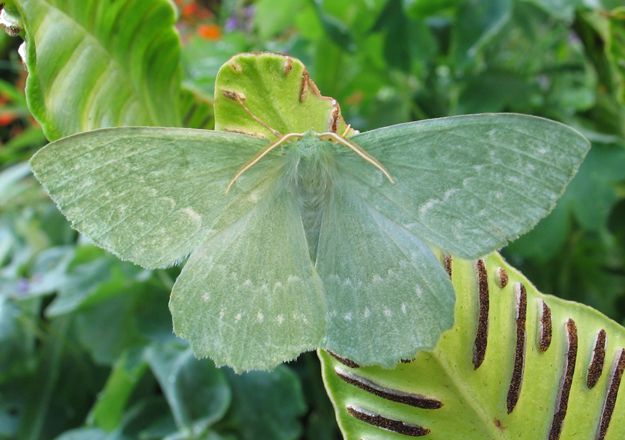- info@sirhowyhillwoodlands.co.uk
- Thomas Ellis Way, Tredegar NP22 4QF
- About Us
- Get involved
- Visit Us
Visit Tredegar & our Woodlands
Come and visit us!
Sirhowy Hill Woodland
Thomas Ellis Way
Tredegar
Blaenau Gwent
NP22 4QF - Wildlife
- Woodland Shop
Latest and greatest products, direct from our
Woodland Shop
Sourced from the Woodlands and the local community.
You have
item(s) in your bag
- Home
- /
- Blog
- /
- Animals & Wildlife
- /
- Moths
- /
- Large Emerald

Scientific name: Geometra papilionaria
Large Emerald
Late June to late August. Common and well distributed throughout Britain. The largest of the British emeralds.
Easily identified by its large size and the scalloped edge to the wings. The green wing colour does not fade as in most other emeralds. White cross-lines are also scalloped with lines of white dots below.
The adults rest with wings spread and raised at an angle similar to a butterfly. They fly at night and are attracted to light but also occasionally fly high in the tree canopy on warm, sunny days. The caterpillars can be found from July to the following June and are first brown becoming green with brown lumps after overwintering.
What do Large Emeralds eat?
Large Emeralds eat Downy Birch (Betula pubescens), Silver Birch (Betula pendula), Hazel (Corylus avellana), Alder (Alnus glutinosa) and possibly also Beech (Fagus sylvatica).
What habitats does the Large Emerald live in?
Large Emeralds live in a range of habitats including woodland, scrubby heathland and grassland, well established hedgerows, gardens and parks
What family does the Large Emerald belong to?
Large Emeralds live in the Geometridae family.

Click to view more
Statistics
Scientific Name
Geometra papilionaria
Location
England, Wales, Scotland and Ireland
Size
Medium / Large Sized
Wingspan Range: 50-60mm
Population
Common. Well distributed throughout most of Britain and Ireland. Local on the Isle of Man and Jersey.

Other Wildlife







